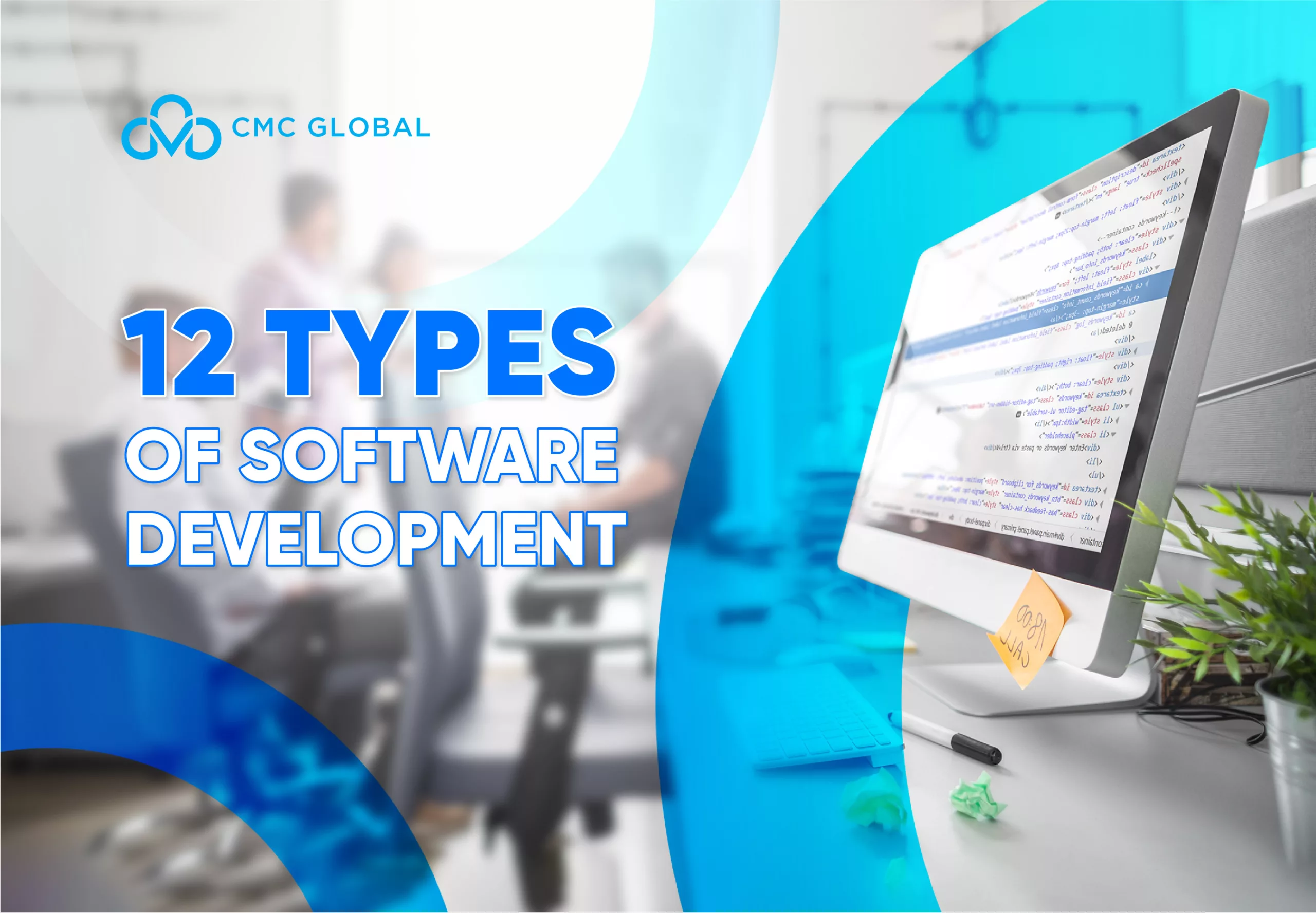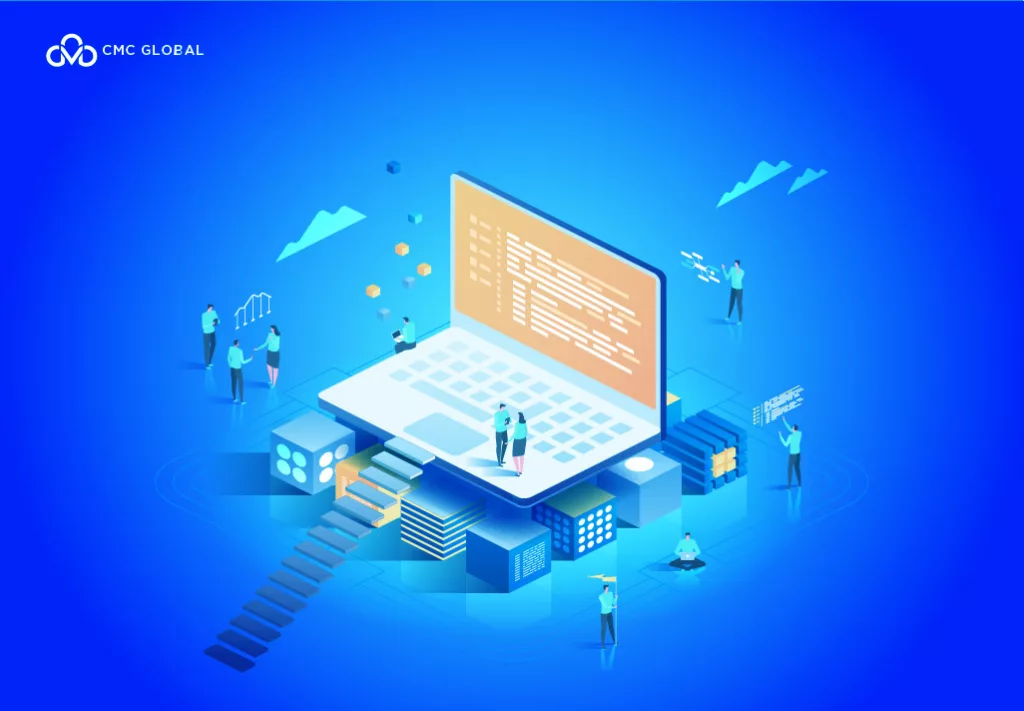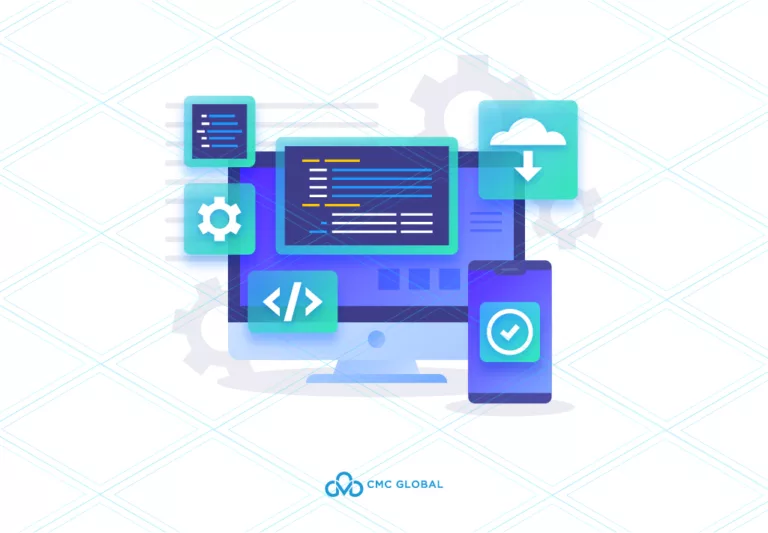Front-end development
Front-end development represents the part of software development that users interact with directly. It includes the visual components of any system, application, or website, making it immediately observable to users.
Typically, front-end development includes creating user interfaces (UIs) and overseeing client-side interactions. UIs play an important role in enhancing software’s attractiveness to end-users, serving as the areas where users interact by clicking, scrolling, and inputting information as needed. When coupled with an appealing interface and a well-functioning back-end, this ensures that users can effortlessly navigate through your software.

In front-end web development, JavaScript, CSS, and HTML stand as essential technologies. Additionally, graphic elements serve as fundamental components of not only operating systems, web browsers, and every software framework.
Back-end development
Back-end development refers to the type of software development that operates behind the scenes. This involves managing server-side operations, which include the infrastructure supporting the software application (servers, databases, and application programming interfaces (APIs)).

Servers handle incoming requests, databases store user data and other pertinent information, while APIs facilitate the integration of interconnected software components. All of this process happens backstage, meaning you can’t see it.
Numerous programming languages and tools cater to back-end development, both within and outside the context of web development. Currently, the prominently preferred languages for back-end development include Ruby, Python, and Java.
Read more: 9 Types of Software Engineers: Roles and Skills
Full stack development
In the final analysis, the quality of a software application is ultimately judged by the user’s experience with the front-end, while the back-end plays a crucial role in ensuring smooth operation throughout.

In essence, back-end and front-end development collaborate to provide the optimal solution. In this context, full-stack development represents the fusion of client-side and server-side development. In most cases of software development, it’s essential to consider the ultimate aim of achieving full-stack development.
Data science
Data science is a discipline that sits at the crossroads of programming and data analysis. It emphasizes the importance of analyzing substantial datasets to uncover trends and behavioral patterns.

Generally, data scientists are not focused on creating market-ready software; their primary task is developing programs, ranging from small to large-scale, tailored for data analysis purposes. Data can be employed to identify banking fraud, perform medical image analysis, and even enhance advertising strategies.
Cloud computing development
Cloud technology includes a wide range of software applications, from storage solutions like Google Drive to software tools such as GitHub.

In essence, cloud computing involves providing resources as needed without the complexities of physical infrastructure or intricate internal systems.
The operation of cloud technology often involves simplifying the back-end of a software system, allowing users to focus primarily on managing front-end interactions.
Security software development
Security experts create software to safeguard private data, with a significant aspect of their work involving the testing of a software system’s security.

In this approach, penetration testers, acting as skilled professionals, test a system’s security protocols by attempting to breach them. Upon identifying these vulnerabilities, the security team can then focus on devising strategies to overcome them.
Mobile development
Mobile development, also known as mobile app development, is perhaps the most common form of software development encountered. This prevalence can be attributed to popular smartphone apps like Candy Crush Saga, Angry Birds, Subway Surfers, and the latest trending mobile applications.

It’s highly likely that you’ve also utilized social media on your smartphone through a mobile app. To clarify, mobile app development involves creating software applications specifically designed to run on mobile devices, such as smartphones and tablets.
Interestingly, mobile development employs a distinct set of tools compared to other software development types. For instance, native app development for Android relies on Java or Kotlin programming, whereas iOS app development requires Objective C or Swift programming.
Application development
Application development, a broad category within software development, plays a central role in every software project. In short, application development encompasses the creation of computer programs or sets of programs aimed at achieving business objectives.
The process of application development adheres to a consistent series of steps for each project:
- Gathering requirements.
- Designing prototypes or a minimum viable product (MVP).
- Programming and testing the application.
- Launching the application.

These fundamental principles are applicable across various forms of application development, including:
– Rapid application development
– Low-code application development
– Mobile application development
– Web application development
– And any other general type of software development.
API development
API development empowers developers to expand the capabilities of software beyond conventional limits. An API, which stands for application programming interface, functions as a bridge connecting different software components.

Think of it this way: just as a user interface (UI) offers a way for human users to interact with software, APIs offer a means for software to interact seamlessly with other software. API integrations are a vital element of the software development puzzle, enabling functionalities like sharing clickbait on Facebook or the instant activation of Google Maps when you search for an address.
From this point forward, you can anticipate APIs becoming an essential component in all types of software development.
Desktop development
Desktop development involves building applications designed exclusively for desktop operating systems such as Windows, macOS, or various Linux distributions.
Have you ever utilized applications like GarageBand or composed documents using Microsoft Office Word? If so, you’ve had experience with desktop applications.

In the past, desktop development held a dominant position within the software industry. However, with the rise of smartphones and mobile apps, desktop development has become less commonplace.
Nonetheless, desktop applications remain a part of daily life. For those of you currently accessing this web page from a computer, it’s worth noting that your web browser is, in fact, a desktop application!
Software tools development
In software tools development, programmers build tools tailored for fellow developers to facilitate the development of software. These software development tools encompass computer programs dedicated to the tasks of generating, debugging, and upkeeping code.

The main part of software tools often consists of integrated development environments (IDEs), which provide comprehensive environments for coding, executing, and testing. Code editors, on the other hand, resemble IDEs in their function but maintain a simpler and more streamlined design. Essentially, they function similarly to text editors, but they are specialized for handling code. Moreover, there exist version control systems (VCSs) like GitHub, which foster online collaboration among developers.
In short, the takeaway is that developers employ a diverse array of tools in the software creation process, highlighting that coding alone does not include the entire landscape of software development.
Embedded systems development
Embedded systems include computer systems integrated within larger mechanical devices. Take a digital camera for instance, in order to enable dedicated functions like photo storage, developers are required to construct an embedded system within the camera device.

Modern automobiles, smartphones, and even manufacturing equipment also rely on embedded systems. In reality, most of the technology you encounter beyond your computer is likely to incorporate embedded systems in some capacity.
Embedded systems development typically necessitates the use of middleware, which denotes software tools capable of seamless interaction with hardware. To clarify, hardware is the physical framework of computers and machinery, while software represents the internal programming. Given that embedded systems are inherently situated within mechanical hardware, expertise in middleware is indispensable for their development.
CMC Global – Your Trusted Partner for Software Engineers
At CMC Global, we offer top-tier software engineers to fulfill all your business requirements. Our comprehensive software development service includes Web Frontend Design, Backend Development, Custom Web Application, and SaaS Applications Development.
We also deliver customized testing solutions for your company’s projects, guaranteeing optimized outcomes. Furthermore, we perform quality assurance assessments and provide you with a comprehensive report highlighting any detected issues and detailed instructions for their resolution.
Schedule a free consultation for further details!





